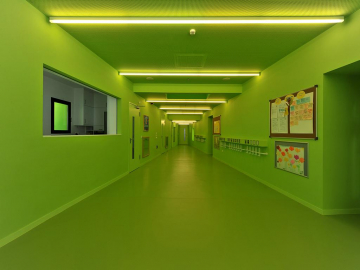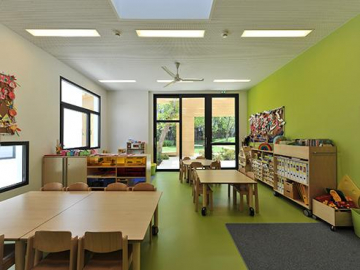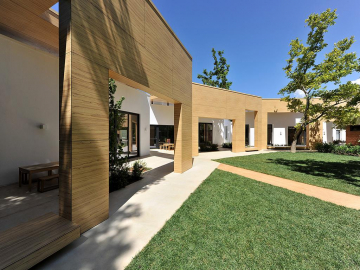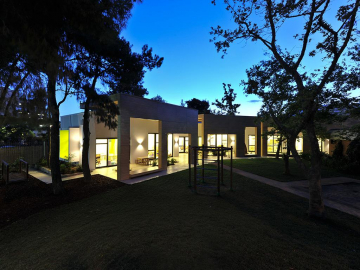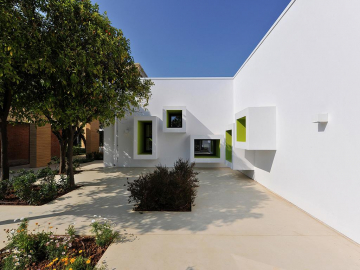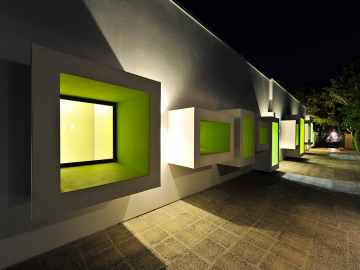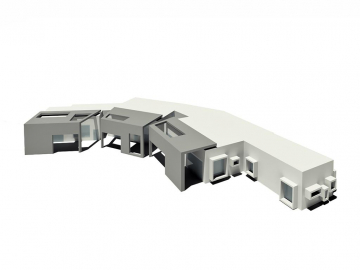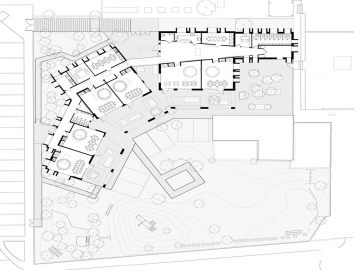Kindergarten of German School of Athens
The Kindergarten of the German School of Athens in this case - is the first public building a young child comes in contact with, and hence, attributes to it a dilated importance. The building was addressed during the synthetic approach not merely as function - as by convention we know - but as contributor to the actions of the small pupils, as material semiotic system involved with them through a network of interactive relationships.
This is an approach which is based on the stance that architectural space is not idle, that is not sufficient to measure it geometrically in order to understand it. On the contrary, it constitutes an internal, inherent and transformable part of human daily life, closely connected with the social and personal rituals and activities. In this perspective, the devising of gestures that will give new displacement in the educational effort by mobilizing mental and emotional reflexes of the child, describes the conceptual axis of the idea.
The established neutral proposals for preschool facilities that we know of in our country seem correct in one sense: about what they say; but what they do not say, what they omit, is the most important. They are proposals based on logic, order and safety, but they are not proposals for running, for carefree wandering, for voices, for fruitful contrasts, for hidden facts, for mere contemplation, for situations out of control. Thus, a need emerges: to think the unthinkable, as E. Grosz writes, to imagine an architecture outside the boundaries of until now.

